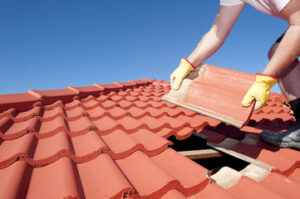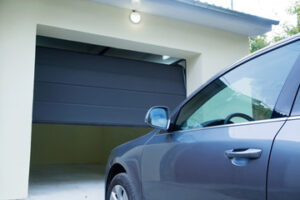Phoenix Tree Trimming is a process of removing dead, diseased, and broken branches. This practice improves tree health and maintains a safe outdoor environment.
Thinning cuts are used to open the crown to allow more light and air penetration. This helps the limbs grow to their full potential.

Many people think the benefits of tree trimming are strictly aesthetic, and it’s true that a well-groomed landscape looks clean, tidy, and adds value to your property. But regular tree trimming can also have significant health advantages.
For example, a tree needs sunlight to grow its leaves and absorb nutrients. If some leaves are hidden from the sun by other branches, they can’t get the sunlight they need to be healthy. Trimming a tree allows more of its leaves to receive sunlight, which improves the overall health of the tree.
Additionally, a trimmed tree is less likely to suffer from damage or disease because dead or dying limbs are removed before they have a chance to fall off. And by removing limbs that are growing too close to power lines or buildings, tree trimming can reduce the risk of damage during a storm and protect against potential power outages.
Moreover, by pruning the roots of a tree, you can promote the growth of new root systems and encourage a strong structure that will help the tree resist damage from wind or snow. Lastly, when a tree is trimmed properly, it can help prevent fungus, diseases, and insects from invading the plant.
When done by an experienced professional, proper tree trimming can increase the health and longevity of a plant. This is because a trained tree trimmer knows how to identify the specific needs of a plant and what techniques will provide the best results. Additionally, an experienced tree trimmer can avoid over-trimming a plant, which could lead to stress and other health problems. Finally, a trained professional will know how to remove damaged or diseased branches without damaging the rest of the plant. This will allow the remaining parts of a tree to heal and continue producing beauty and shade for your property.
Aesthetics
Trees are an integral part of your landscape and help create a beautiful, lush appearance. But, to keep your trees looking their best, regular trimming is essential. Regular pruning can promote plant health, enhance aesthetics, increase property value and safety. Here are some of the main benefits of Tree Trimming:
Aesthetics
Pruning is a critical element of landscaping for both homes and businesses. It provides an aesthetic enhancement by promoting a balance of shape and size and creating a visually appealing silhouette. In addition, regular pruning can help control the growth of a tree, prevent overcrowding, and maintain clearance for pedestrians, cars, and structures.
To achieve the most aesthetically pleasing result, it’s best to hire a professional tree trimming service that is familiar with the needs of specific species and varieties of trees. These professionals can identify the desired shape and structure of a tree and apply the correct techniques to achieve it. In addition, they can encourage a tree to produce fruit or flowers, further enhancing its aesthetic appeal.
Aesthetic tree trimming can be done at any time of year, but the best time to prune is during the dormant season. This helps the tree recover faster and minimizes the risk of disease transmission. It’s also important to follow the One-Third Rule, which means that no more than one-third of a tree should be removed at any given time.
Aesthetic tree trimming involves removing dead or damaged branches, preventing the spread of diseases and pests, and regulating the growth of a tree’s canopy. It’s also important to balance the crown, reducing the number of branches and removing those that are too large or overgrown. In some cases, it may be necessary to remove entire branches, especially if they are a hazard or block power lines. In these situations, it’s important to consult with a tree care expert to ensure that the work is conducted safely and effectively.
Safety
Trees can be a beautiful part of your landscaping design, but they also pose potential safety hazards. Overgrown branches can fall during storms or high winds, causing damage to property and injuring people. Regularly trimming your trees can help prevent these issues, as well as keep your family, neighbors, and visitors safe.
The first and most obvious benefit of regularly pruning your trees is safety. Branches that are too close to your house or other structures can break off during a storm and cause damage. They can also pose a risk to people passing by on the sidewalk or driving by in their car. Keeping your trees properly trimmed can reduce the likelihood of falling limbs and minimize the risk of injury or property damage.
Another benefit of regularly trimming your trees is that it promotes their health. Removing dead or damaged branches prevents the spread of disease and pests, and it encourages new growth and fresh airflow through the canopy. Regular pruning can also increase sunlight penetration and improve fruit production in fruit-bearing trees.
Finally, regularly trimming your trees can improve the appearance of your yard. A well-groomed landscape with trimmed trees adds to the curb appeal of your home and boosts its value. It is important to trim your trees at the right time of year, which can vary by species. Some trees are best trimmed during their dormant season, while others require trimming when they are actively growing. Consulting with a professional arborist or doing your own research can help you determine the proper pruning schedule for your trees.
The final benefit of regular tree trimming is that it can reduce the risk of damage to your property and improve the functionality of your landscape. Overgrown trees can block views, obstruct power lines, and create structural problems for buildings and other structures. Keeping your trees trimmed can help prevent these issues and maintain the beauty of your landscaping.
Maintenance
Tree trimming is a vital part of your property maintenance. It promotes healthy growth patterns, removes potential safety hazards, and improves your landscape. It also helps prevent damage to structures or property caused by limbs that fall or interfere with power lines. Regular pruning can help reduce the need for costly tree removal services in the future.
The most obvious benefit of Tree Trimming is the removal of dead or damaged branches. These limbs are often at risk of falling during a storm and can cause severe damage to homes, vehicles, or people. Trees that are overgrown and full of debris can also pose a fire risk to your home.
By removing dead or dying branches, your trees will look better and be less likely to fall during a storm. This will also reduce the risk of property damage and personal injury.
Another reason to trim your trees is to remove branches that are obstructing other parts of your property. These obstructing branches can block sunlight from reaching the ground and inhibit the growth of surrounding plants. Tree trimming will allow more sun to reach these areas of your yard, allowing for better plant growth and curb appeal.
Thinning your tree crown is a type of pruning that is often done to increase sunlight penetration and airflow. It can also reduce stress on selected limbs from the weight of snow, wind, gravity, or other factors.
Trees need a lot of sunlight to grow big and strong. Photosynthesis is the process by which a tree converts sunlight into energy and nutrients. However, a tree’s ability to perform photosynthesis is directly related to how much sunlight can reach its leaves. By removing excess branches, you can help your tree grow bigger and stronger.
While many people think that trimming their own trees is a good idea, it is recommended to hire a professional for the job. A professional arborist will have the knowledge and experience to ensure that your trees are trimmed correctly, keeping them healthy and looking their best. In addition, a professional arborist can spot any signs of disease or pest infestation and report them to the appropriate authorities.



